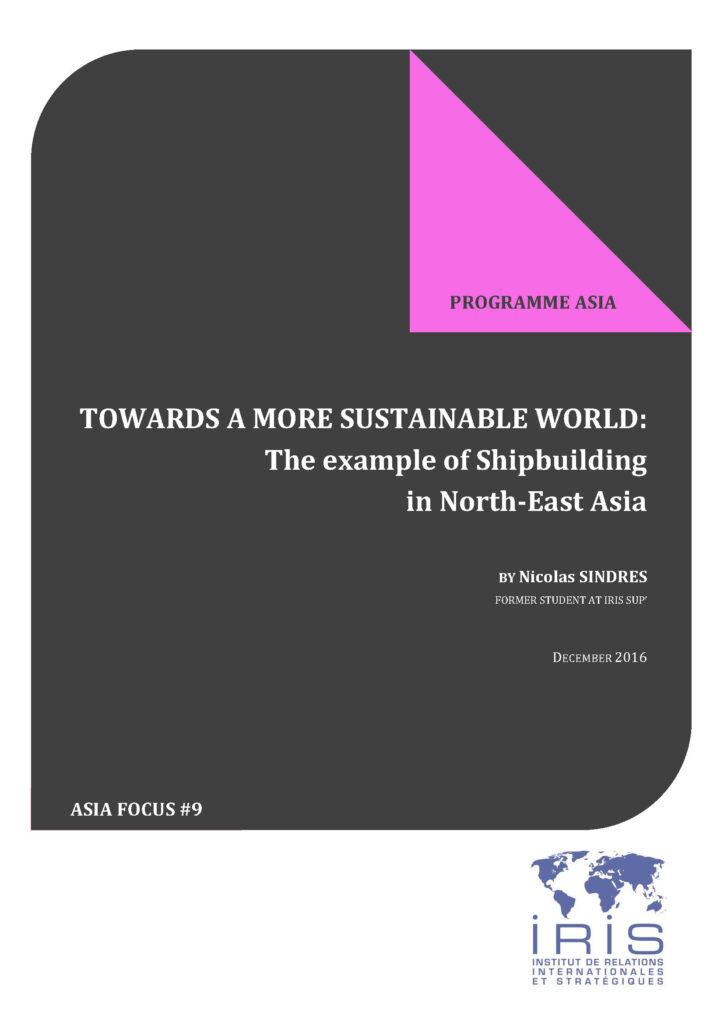Notes / Asia Focus
14 décembre 2016
Towards a More Sustainable World: The Example of Shipbuilding in North-East Asia

Shipping is mostly an unknown and unrecognised economic activity. However, it is responsible for 90% of the world trade. This impressive number should be a reason for us to highlight the place of this indispensable business tool in the world we live in. Performed by many companies called ship-owners, the activity of shipping was said to be using 50,420 merchant ships on January 1st 2016, ranging from the smallest cargo carriers to the largest container carriers. Needless to say that such an industry needs a powerful and competitive supply offered by well-implanted companies in order to survive. With no other way to be as effective and cheap in the amount of merchandise transported by trip, shipping is here to stay, as well as shipbuilding, which is the compulsory corollary of the former.
Today, container ships can be as long as 400m (the equivalent of 4 football pitches), are powered by enough energy to light up a city of 16000 inhabitants, and can transport the equivalent of 200,000 to 210,000 tons of cargo, shortening the distance and with the less impact on the environment (by ton transported). Indeed, transporting a container from Shenzhen to Rotterdam costs $1082, or just 50 cents per kilo, in just 30 days. Moreover, a 9500 TEU containership only uses 8,3 CO2 grams per ton/kilometre, whereas a cargo plane needs 570 CO2 grams per ton/kilometre, and lorry would use 104,5 CO2 grams per ton/kilometre. Needless to say that shipping is the shortest, the cheapest and the eco-friendliest way of transporting merchandises…

